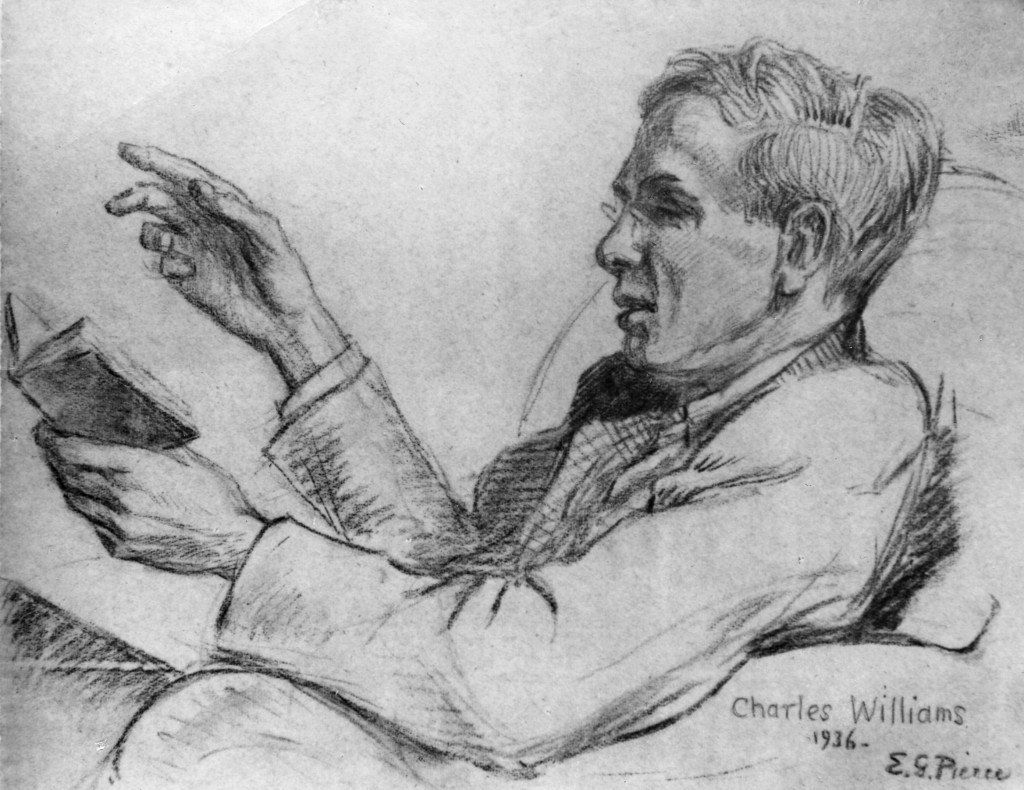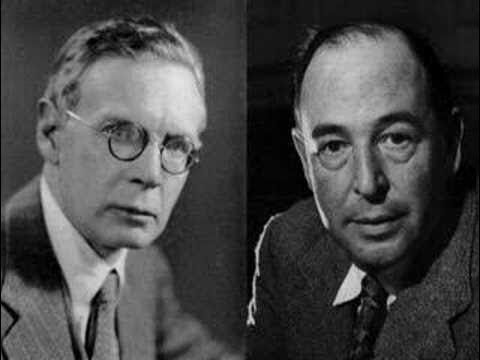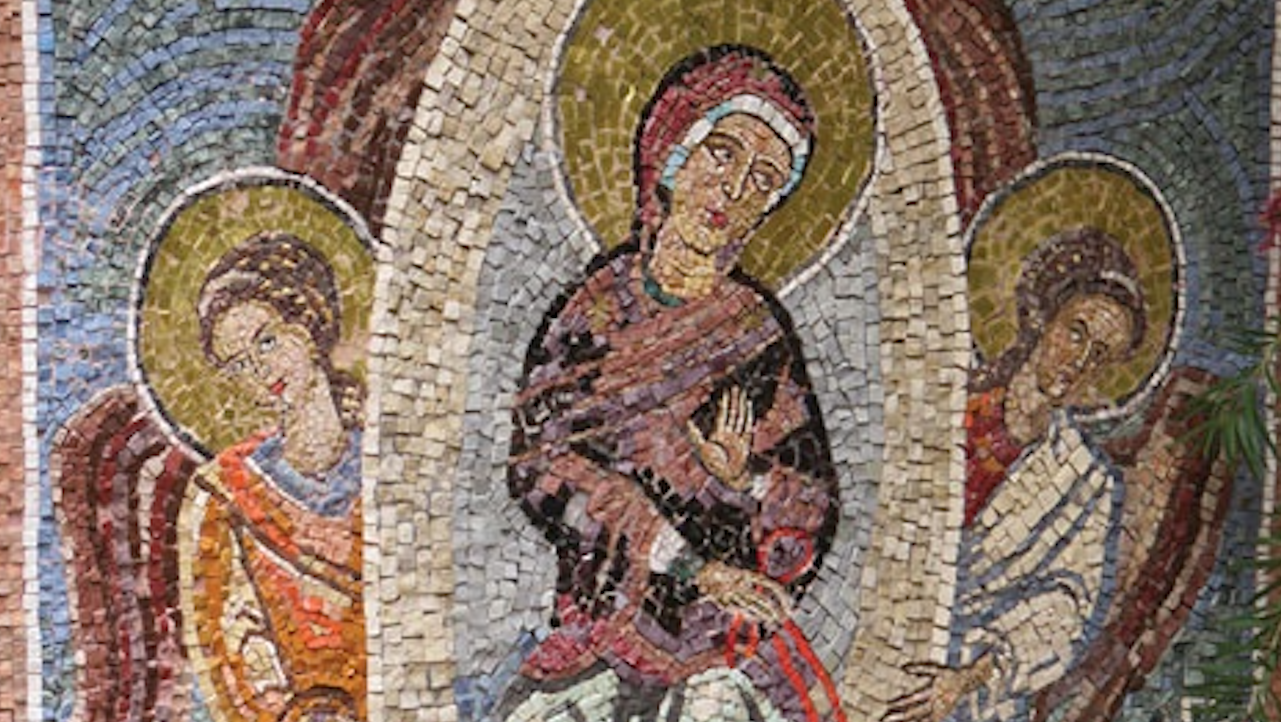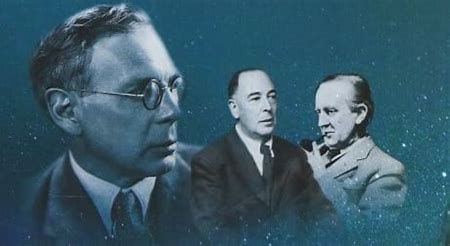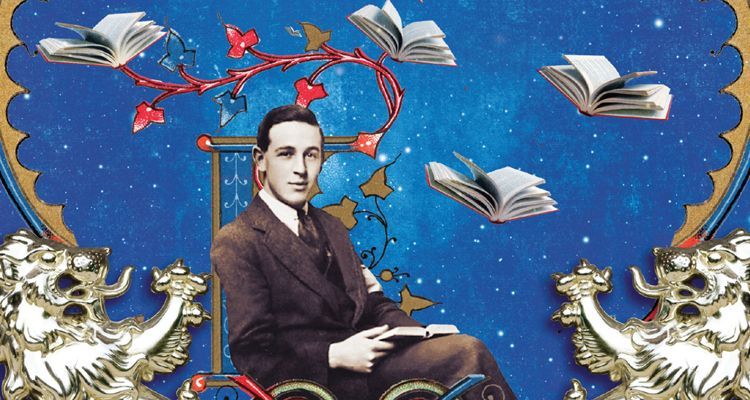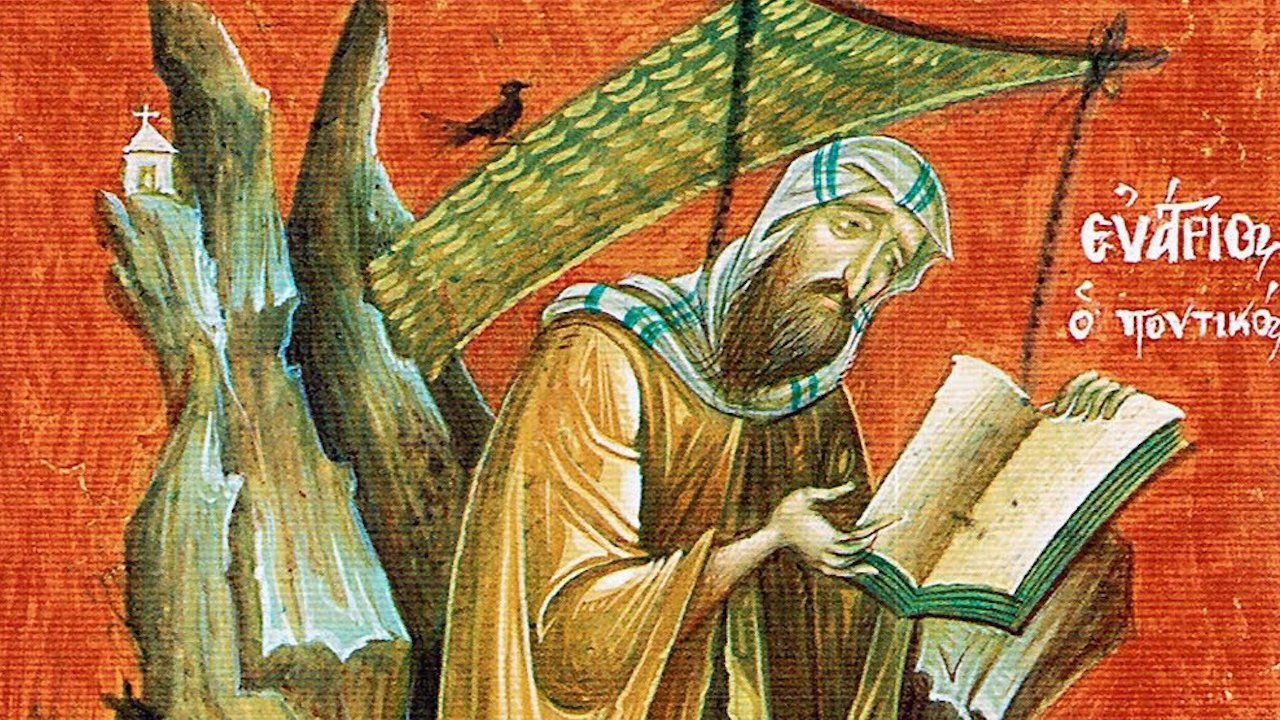Remembering to Hope: Three Christmas Stories
by Gaelan Gilbert
Feast of St Melania the Younger of Rome
Anno Domini 2020, December 31
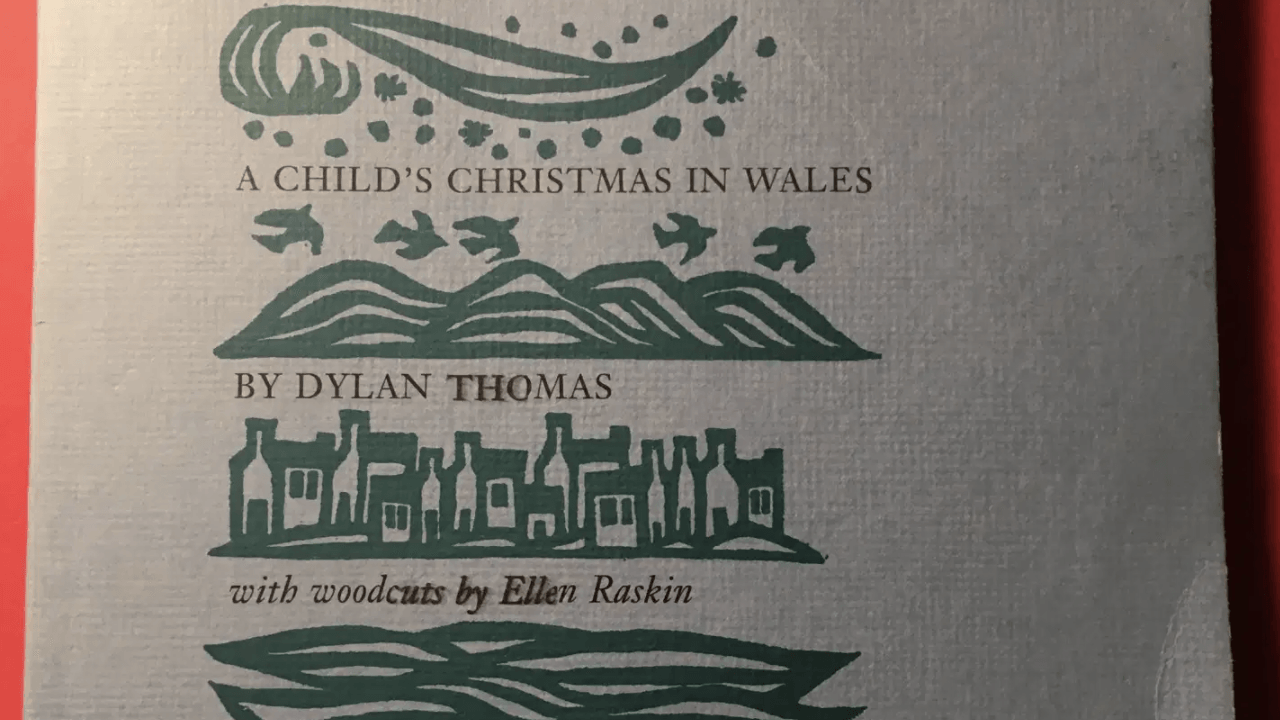
As the headlines ceaselessly warn, this Advent season and coming Christmas are sure to be different than those in recent memory. I will not succumb to a bland obfuscation of history by suggesting all other Christmases have been experiences of unalloyed jolliness. The circumstances in Bethlehem and surrounding regions on the first Christmas were hardly such, if we'll recall. Nonetheless, I want to offer a brief reflection on three short-stories that orbit the season of Nativity and retrieve something of what is common to its atmosphere of holy celebration: memory, friendship, and hope.
The three stories are: Dylan Thomas’s A Child’s Christmas in Wales (1952); Truman Capote’s A Christmas Memory (1956), and Henry Van Dyke’s The Story of the Other Wise Man (1895).
Christmas celebrations possess a beautiful, broad variety across cultures, some of which are more well known to us than others. In Alaska, there’s “starring.” In Greece, boats start to appear in town squares for St Nicholas (the real one). Across Germany, Weihnachtsmarkts ("Holy-night markets") offer glühwein, while in France it’s villages de noël serving vin chaud. In American squares and main streets, evergreen wreaths adorn lamp-posts and doors, and white or colored lights outline eaves and windows. This season evinces like no other the centripetal impact of Christ’s nativity upon public space, at least in places which have an historical Christian presence.
It is similar with these stories, but in subtle ways. Two of them have the word “Christmas” in the title, but don't let that narrow your expectations; in none of them do we ever find ourselves in the lowly cave-stable, at the foot of the manger surrounded by kindly beasts and celestial choirs. Far afield, in fact. Yet the characters and events of which they tell may bring us somehow nearer to the mystery of divine incarnation, the presence of God in our midst, hidden and waiting to be found.
Especially as seen from our grim perch overlooking the wastes of 2020, each story possesses a palpable nostalgic aura. Nostalgia is often scorned by those who prefer “realism” and “an embrace of the present moment with all its challenges.” What such perspectives fail to recognize is the ways in which good memories prepare and strengthen us for enduring difficulties in the present. Nostalgia becomes hazardous only when we remain captivated by memory to an extent that paralyzes us, or goads us to reactionary fervor. More basically, the remembrance of the good, including genuinely better times, can refocus personal commitment and fidelity in the present moment, helping us weather loss and depression. It is one of memory's spiritual purposes to do so.
The Christian tradition teaches that the remembrance of God’s providence in our lives is vital to a properly realistic understanding of our own limits, encouraging a disposition of gratitude and a habit of offering and seeking forgiveness. The Elders of Optina monastery in 19th c. Russia taught this, and Fyodor Dostoevsky was a regular pilgrim to Optina. At the end of his novel The Brothers Karamazov, Alyosha Karamazov says this:
You must know that there is nothing higher and stronger and more wholesome and good for life in the future than some good memory, especially a memory of childhood, of home. People talk to you a great deal about your education, but some good, sacred memory, preserved from childhood, is perhaps the best education. If a man carries many such memories with him into life, he is safe to the end of his days, and if one has only one good memory left in one’s heart, even that may sometime be the means of saving us (774).
The Christmas stories by Thomas and Capote that we’ll explore below are literary exercises in this sort of memory (Van Dyke’s is something a little different). Both evoke something far deeper than the cozy accoutrements of hygge, something mysterious and revelatory about innocence or friendship or hospitality that can be brought along like a precious pearl through the darker, lonelier chapters of life.
They do so with differing forms in differing settings, as conveyed in differing literary styles. In Dylan Thomas’s A Child’s Christmas in Wales, we are transported into a modernist reverie about Welsh winter hijinks in a vivid, illustrated prose-poem. The boys who are its red-cheeked protagonists call to mind the group of boys in Brothers K, whom Alyosha comes to befriend and mentor, but the backdrop of their nurture in Thomas’s A Child's Christmas is neither squalor nor decadence, but a blue-collar parochial (in the true sense) neighborhood.
The close-knit village setting of snowy Swansea circa 1925 where we find ourselves in Dylan’s memory is a place where cats expertly dodge snowballs, bells ring all Christmas morning, impromptu caroling (and oven fires) erupt in steamy kitchens, and snoring uncles, “breathing like dolphins,” retire in the parlor after drinks and dinner. The story’s end casts a glance out the bedroom window of childhood, where the soft murmur of a celebratory evening lulls to sleep:
Looking through my bedroom window, out into the moonlight and the unending smoke-colored snow, I could see the lights in the windows of all the other houses on our hill and hear the music rising from them up the long, steadily falling night. I turned the gas down, I got into bed. I said some words to the close and holy darkness, and then I slept.
Such reveries of convivial community are like cool, fresh water in our desert of digital meetings and social distancing. Rather than let the disparity of our present moment bring us to despair, however, we can labor to discern ways of recuperating the essence of what Swansea embodies for Thomas, and let that recharge an impetus toward practices of hospitality, domestic celebration, and a strengthening (or healing) of familial bonds that are possible in the present. We may not need to look as far as we think. Even if we live alone, and it’s an extra effort to find “thicker” ways of connecting, it’s worth it.
Truman Capote’s A Christmas Memory likewise journeys back into the author’s younger days, in this case 1930s rural Alabama. Until he was ten Capote lived with several “distant and elderly cousins,” one of whom was a sixty-something, spry woman he refers to only as “my friend” (her name was Nanny “Sook” Faulk). For her, Capote is “Buddy,” who, along with Queenie (her dog), is her willing accomplice in random acts of generosity, Christmas-tree acquisition, and holiday fruitcake-distribution.
Their philanthropic adventures encapsulate one of the only happy times in Capote’s life. Although one thing that connects his childhood and adulthood is the sense of being misunderstood by others, Capote finds refuge in his child-like elderly friend, whose nascent senility and forty years of widowhood only endear her all the more. She represents, in fact, a member of the "prior generation," but in an age when the elderly weren’t so easily or eagerly sequestered away in nursing homes or retirement communities.
Rather, older people were simply around, if not in our own homes, then just down the street. To an extent this is still the case, but far less than decades ago. When I was around Buddy’s age, 7 or so, my maternal grandmother lived with us for six months out of the year. The memories are vivid: riding in the backseat of her blue Buick for drive-thru fast food; wondering why my mother grumbled at the dozen shakes of salt that her mother showered on every dish; her wrinkly skin, soft hands, and warm brown eyes smiling from the couch every evening as she crunched ice between her teeth; watching with horror as she removed those same teeth and put them in a glass of water before bed. And her laugh. How can a cackle be elegant, and magnetic? And yet it was.
In A Christmas Memory, Capote retrieves something of the importance of friendships between younger children and old people. They have quite a bit in common, after all. As Capote puts it, “[o]ther people inhabit the house, relatives; and though they have power over us, and frequently make us cry, we are not, on the whole, too much aware of them” (12-13). That’s because the boy and the widow, in this story at least, have more important things to do.
Like figure out how to get whiskey in the midst of Prohibition—for the fruit-cakes, of course. And then bake, douse, and distribute them, including mailing one to Eleanor Roosevelt at the White House. And then find the stamina not only to locate and chop down a fir tree “twice the size of a boy,” but also drag it miles back to town. And finally, after the shared disappointment on Christmas morning of receiving only “practical” gifts (“socks, a Sunday school shirt, some handkerchiefs, a hand-me-down sweater, and a year’s subscription to a religious magazine for children” [40]), to make kites for each other, just like last year, and go fly them.
While the kites soar overhead in the windy sunshine, “my friend” rhapsodizes:
"I’ve always thought a body would have to be sick and dying before they saw the Lord...But...I’ll wager at the very end a body realizes the Lord has already shown Himself. That things as they are"—her hand circles in a gesture that gathers clouds and kites and grass and Queenie pawing earth over her bone—"just what they’ve always seen, was seeing Him."
That would be their last Christmas together before Capote was sent off to military school. In the ensuing years, her senility deepens its hold, and one day she is gone. Her death is a loss whose wound Capote carries with him for the rest of his life, a wound of love that reveals grief to be an affirmation of what was, and somehow still is, true and good. In A Christmas Memory, a portrait of two people separated by six decades making fruitcake together witnesses to the bridge that friendship can be across spans of time: years, decades, centuries.
It makes me wonder: how far back could someone write a genealogy of inter-generational friendships? All the way back to the birth in Bethlehem, a sort of continuation of the opening passages of Matthew’s Gospel? Capote’s A Christmas Memory never imagines so grand or profound a project. Yet its readers are inspired to contemplate the ways in which bonds between young and old help keep the present alive to the past. Antiquity, in the elderly, gives of itself—its wisdom, its difference, its allure—to contemporaneity, in the young, even while old age is cared for by youth, and historical past tended by living present. This is mutual gift-giving, like the kites made for each other on Christmas.
It’s less of a surprise, with this in mind, that our family’s copy of A Christmas Memory was a gift to my wife from her grandmother (and that this grandmother is the namesake of our eldest daughter). More fundamentally, the social origins of story-telling are familial, rooted in the physical proximity of different generations: those with more experience, more memory, giving those with less of both a taste of things to come. How then could the little child in the manger—who as a boy taught the elders in the Temple—also be the Ancient of Days? And yet it is so.
Taking a different approach than the stories by Thomas and Capote, Henry Van Dyke’s The Story of the Other Wise Man journeys further back in history to the childhood not of its author, but of Western civilization. Written half a century before the other two we’ve explored, its style is characteristically late Victorian: crisp if occasionally florid prose, a convincing fusion of plot-line and moral suspense, and a tone of respectful exoticism one would expect from a diplomat and Princeton professor of literature like Van Dyke.
The story reimagines the visitation of the magi by way of a forgotten or unknown fourth member named Artaban, who, unlike his star-searching fellow Zoroastrians, never makes it to the manger in Bethlehem. But it’s not for lack of trying. In fact, he keeps up the search for 33 years. He sets out after seeing the star with three jewels, for which he has sold everything, to give as gifts to the newborn King. In the course of his decades-long journey, he finds himself on three chronologically distant occasions faced with a crucial decision: either give away a jewel in order to help someone in dire need, or retain it and finally meet the Lord. What will he do?
In the penultimate chapter, Artaban is meeting with a Hebrew rabbi in Alexandria who gives him some important counsel:
the light for which the world is waiting is a new light, the glory that shall rise out of a patient and triumphant suffering. And the kingdom which is to be established forever is a new kingdom, the royalty of perfect love. [...] Those who seek Him will do well to look among the poor and the lowly, the sorrowful and the oppressed (34).
Linked at the heart of Van Dyke’s story are two exceedingly profound messages: first, that those who truly desire to find Jesus Christ—with that desire exemplified in their life and actions according to their efforts within circumstances they cannot avoid—are shown a mercy appropriate to that desire; and second, that the love of our neighbor, if enacted in the name of the God who is love (1 Jn. 4:8), is love of God. The way in which the words of Matthew 25 are woven into the story’s ending is masterful, and—fair warning—very moving, even to tears.
Such tears are ultimately reason to rejoice, however, for with stories like Van Dyke’s The Story of the Other Wise Man, or Capote’s A Christmas Memory, or Thomas’s A Child’s Christmas in Wales, or [fill in the blank here with one of your favorites], we escape the fate of that pitiful, corrupted boy in W. H. Auden’s poem “The Shield of Achilles,”
who'd never heard
of any world where promises are kept,
or one could weep because another wept (ll. 57-59).
Reading good literature boosts our souls up momentarily to breach the dense canopy of interior distraction, narcissism, and vulgarity to see—behold!—the real, blazing sun. It makes us forget ourselves and, from a vantage of suspended self-interest, opens us up to what needs seeing before or within us. More specifically, in a time of forced reclusion, short stories like these can whet our appetite with fore-tastes of what life at its best looks like: lived compassion for those in need, friendship with those further down life’s path, and holy feasting with those in local community, all of which are revealed as thresholds for the presence of God, the God who was born and “dwelt among us” (Jn. 1:14).
Tolkien said that the Christian story—of God doing the unimaginable by becoming incarnate, and then conquering death—is the story beneath all stories, myth become fact. The Incarnation is also hope’s entrance into history, the font of Byzantine-Western civilization, and the event of infinite depth that makes sense of our lives and the suffering and joy that fills them. This—the true significance of Christmas—is worthy of remembrance, cause for hope, and reason for celebration. One can discern glimmers of that true story and its images of redeemable humanity all around us, but we have to look in order to see. These stories by Thomas, Capote, and Van Dyke help us in that seeing. They also make for great reading aloud with families, or in quietude by oneself. So, warm up the glühwein, and enjoy!
Gaelan Gilbert is a visiting professor of Arts & Humanities at the University of Saint Katherine in San Marcos, CA, and an adjunct professor of Literature and History at Hellenic College Holy Cross in Brookline, MA. In addition to scholarship on medieval poetry and religious culture, he has published a collection of poems, One is Found First, and a children's book, Laurel and the Wind. He lives in Tuckahoe, NY with his wife and three children.
Contribute to Cultural Renewal by Sharing on Your Preferred Platform
In an isolating secularized culture where the Church's voice is muffled through her many divisions, Christians need all the help they can get to strengthen their faith in God and love toward their neighbor. Eighth Day Institute offers hope to all Christians through our adherence to the Nicene faith, our ecumenical dialogues of love and truth, and our many events and publications to strengthen faith, grow in wisdom, and foster Christian friendships of love. Will you join us in our efforts to renew soul & city? Donate today and join the community of Eighth Day Members who are working together to renew culture through faith & learning.

